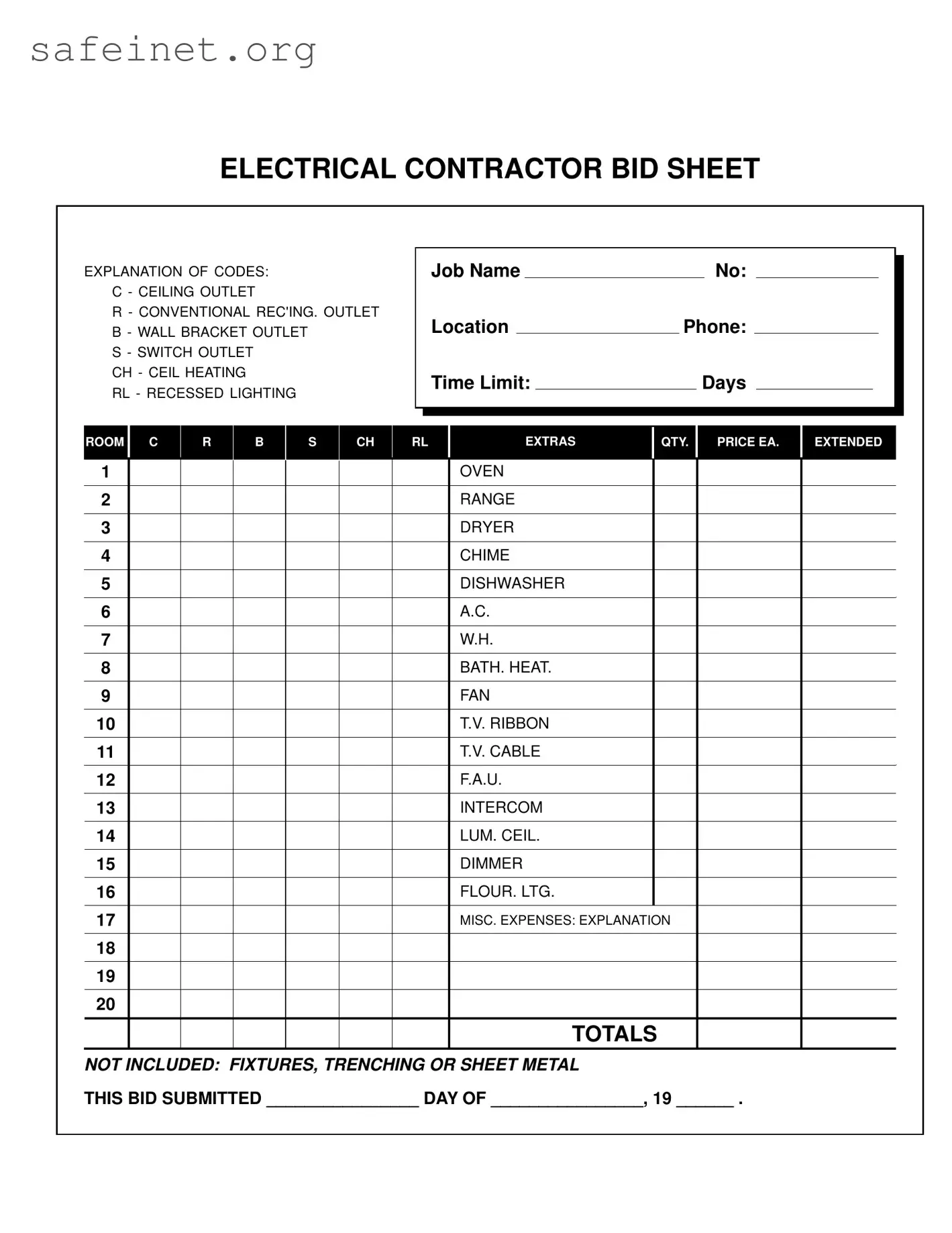What is the purpose of the Electrical Proposal form?
The Electrical Proposal form is designed for electrical contractors to provide a bid for a specific job. It outlines the various electrical components and services the contractor can offer, allowing clients to understand the scope and costs of the project.
What does the code “C” stand for in the form?
The code “C” represents "Ceiling Outlet.” This indicates that the proposal includes installation or work related to outlets located in the ceiling.
How are prices determined for each item listed on the form?
Prices for each item are calculated by multiplying the quantity indicated by the price per item. The total cost is then summed up at the end of the form, giving a clear estimate for the client.
What should I do if I need items not listed on the form?
If you require additional items not mentioned on the form, you can include them in the “Miscellaneous Expenses” section. You can explain the need for these items separately to ensure clarity.
Are fixtures included in the proposal costs?
Fixtures are not included in the total costs on the Electrical Proposal form. The form explicitly states that costs for fixtures, trenching, or sheet metal are additional and must be accounted for separately if needed.
What is meant by “Extras” on the form?
The “Extras” section allows for items or services that may not fit into the standard categories but are still relevant to the project. This could include special requests or additional features that the client might need.
How do I indicate the job details on the form?
To indicate job details, fill out the section at the top of the form with the job name, location, and phone number. This information helps in keeping track of multiple proposals and facilitates communication.
What is the importance of the “Time Limit” section?
The “Time Limit” section specifies the duration within which the proposal is valid. This ensures both parties are aware of the timeline for accepting the bid and helps prevent delays in decision-making.
Can I request changes to the proposal after submission?
Requests for changes can be made after the proposal is submitted. Communicating any updates or modifications promptly is essential to ensure that both the contractor and the client are aligned on expectations.
What does the term “B” represent on the form?
The letter “B” signifies “Wall Bracket Outlet.” This indicates work related to outlets installed on walls, which may include various fixtures or appliances that require electricity.

